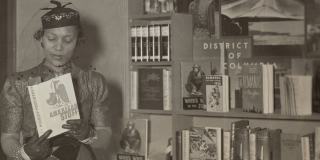The Schomburg Center for Research in Black Culture in Harlem, one of The New York Public Library’s renowned research libraries, is a world-leading cultural institution devoted to the research, preservation, and exhibition of materials focused on African American, African Diaspora, and African experiences. The resources described below—sampled from the Manuscripts, Archives and Rare Books Division—merely hint at the depth and range of materials available to researchers at the Schomburg Center.
Explore:
- The Schomburg Center's research divisions for a more comprehensive overview of our extensive collections.
- The Schomburg Center’s LibGuides, which offer tips for patrons interested in finding out more about how the Library can help with research on a range of topics, including Black activism, Black feminism, Black LGBTQ studies, and comics and graphic novels.
- The Lapidus Center for the Historical Analysis of Transatlantic Slavery, the only facility of its kind based in a public research library, whose collections make the Schomburg Center home to one of the world’s premier collections of slavery material.
- Fellowship opportunities.
Explore everything the Library has to offer for Black History Month, and discover more recommended reads with the Schomburg Center’s Black Liberation Reading List.
Maya Angelou
Maya Angelou (1928–2014) is one of the most renowned and celebrated voices in American literature. She was a poet, memoirist, novelist, educator, dramatist, producer, actress, dancer, historian, filmmaker, and civil rights activist. After working as a dancer and a journalist, she published her first book, I Know Why the Caged Bird Sings (1969), to international acclaim and enormous popular success. Her published verse, nonfiction, and fiction includes more than 30 bestselling titles. She was the recipient of the Presidential Medal of Arts (2000), the Lincoln Medal (2008), numerous literary accolades, and three Grammy Awards. Despite never attending college, she also received over 30 honorary degrees from universities across the nation.

The Maya Angelou papers consist of original manuscripts, computer-generated typescripts, galleys, and proofs of published work, as well as manuscripts for unpublished work and dozens of poems. Additionally, there is personal and professional correspondence, teaching files, printed matter, and materials from public and academic appearances and engagements.
Explore the Maya Angelou papers
James Baldwin
James Baldwin (1924–1987) was an essayist, novelist, poet, playwright, and activist. His novels include Go Tell It on the Mountain (1953), LGBTQ+ classic Giovanni’s Room (1956), Another Country (1962), and If Beale Street Could Talk (1974). His nonfiction books, which include Notes of a Native Son (1955) and The Fire Next Time (1963), remain touchstone texts for many readers interested in Black history and activism.
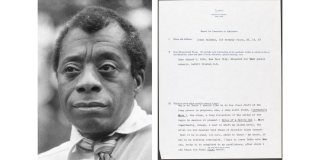
The James Baldwin papers document Baldwin's career as a writer, intellectual, and activist in the United States and abroad. Dating back to 1938, this archive of writings and related documents is indispensable to understanding the significance of his career as a writer and an engaged public man of letters. The archive will enable researchers to trace the textual evolution of virtually all of Baldwin's writings. Each of his novels, essays, screen treatments (including the treatment for an unproduced film about Malcolm X), and dramatic adaptations of his novels are present in the form of detailed manuscript notes, heavily reworked manuscript drafts or significant manuscript fragments, and typescript drafts with his often copious annotations and emendations. The archive contains draft manuscripts and typescripts of his poetry and his important reviews. In addition, there are also personal papers and business records produced by Baldwin and his estate.
Explore the James Baldwin papers
Nat King Cole
Nat King Cole (1919–1965) was a singer and jazz musician whose 30-year career encompassed recordings, performances, television, and film. He made his first recording in 1936 as a pianist with his brother Eddie's sextet, and later formed the King Cole Trio. At the height of his popularity in the 1950s and 1960s, he continued recording popular songs; toured the United States, Europe, Latin America, Asia, and Australia; had his own television series; and appeared in films such as China Gate, St. Louis Blues, and Cat Ballou.
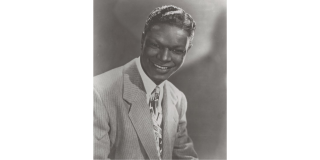
This collection consists of personal and professional material relating to Nat King Cole, including correspondence, programs, and advertisements. Additionally, there is printed matter, such as clippings and articles, scrapbooks, and scores (the largest series). Finally, there is material related to Cole's wife, Maria Cole, including scrapbooks, biographical material, and drafts for a book.
Explore the Nat King Cole papers
Frederick Douglass
Frederick Douglass (c.1818–1895) was a prominent abolitionist, writer, and statesman. After escaping from bondage to freedom as a young man, Douglass joined a broader abolitionist movement in the United States and grew in prominence through his lectures and writing. His autobiographies include Narrative of the Life of Frederick Douglass, an American Slave and My Bondage and My Freedom. He was also an active supporter of women’s suffrage and was a nominee for Vice President of the United States on the Equal Rights Party ticket in 1872.

The Frederick Douglass collection includes 10 autograph letters signed by Frederick Douglass; a typescript of "John Brown," an address delivered at Harpers Ferry and edited in Douglass's own hand; one pamphlet of an Anti-Fugitive Slave Law Meeting at which Douglass presided in 1851; obituaries of Douglass; miscellaneous printed matter; and photocopies and research materials relating to Douglass.
Explore the Frederick Douglass collection
W.E.B. Du Bois
William Edward Burghardt Du Bois (1868–1963) was an influential intellectual, professor, editor, writer, and Pan-Africanist. The first African American to earn a doctorate from Harvard, he taught economics and history at Atlanta University before becoming one of the founders of the National Association for the Advancement of Colored People (NAACP) in 1909. He later served as the NAACP’s director of publications, edited their magazine, The Crisis, and, in the 1940s, headed the special research department. He authored a great number of books, articles and essays, and, after emigrating to Ghana in the 1960s, was editor-in-chief of the Encyclopedia Africana.

The W.E.B Du Bois collection consists of a small body of speeches, articles, correspondence and related material primarily authored by Du Bois. Of special interest is a typescript, with editorial comments, of the first two chapters of Du Bois' autobiography, Dusk of Dawn: An Essay Toward an Autobiography of a Race Concept (1940). The collection also includes a typescript of an article entitled "Miscegenation" (1935). There are 13 speeches and a book review ranging in subject matter from "The Talented Tenth," to a tribute to Dr. Carter G. Woodson, race relations, labor issues, Franklin D. Roosevelt, and Mahatma Gandhi. One of the speeches—"What the Negro Wants in 1948"—was delivered at a meeting of the NAACP.
Explore the W.E.B. Du Bois papers
Lorraine Hansberry
The first Black woman to have a play performed on Broadway, Lorraine Hansberry (1930–1965) is perhaps best known for A Raisin in the Sun, which depicts Black life in segregated Chicago and was made into a film in 1961 starring Sidney Poitier and Ruby Dee. Alongside her work for the theater, Hansberry was a social critic and activist. She wrote essays and worked as a journalist at the Pan-Africanist Freedom paper in New York, where her colleagues included W.E.B. Du Bois.

The Lorraine Hansberry Papers document Lorraine Hansberry's life as an award-winning playwright and activist, and chronicles her activities during the civil rights movement. Virtually all of Hansberry's writings, autobiographical materials, journals, diaries, and personal and professional correspondence are included here, as well as related materials generated by her late husband, Robert Nemiroff, and his third wife, Jewell Gresham-Nemiroff, as the executors of Hansberry's estate. Significant correspondents include Daisy Bates, Louis Burnham, Julian Mayfield, Robert Nemiroff, and William Worthy.
Explore the Lorraine Hansberry papers
Langston Hughes
Poet, author, playwright, and songwriter Langston Hughes (1901–1967) grew up in the Midwest but moved to New York City as a young man. First published as a poet in The Crisis, the magazine of the National Association for the Advancement of Colored People, Hughes became a major figure in the Harlem Renaissance of the 1920s. He went on to publish novels and short story collections including Not Without Laughter (1930) and The Ways of White Folks (1934), plays, and numerous poetry collections. He was awarded an honorary doctorate from Howard University in 1963.

The Langston Hughes collection includes biographical information about Hughes's life and activities alongside his writings, which form the largest series in the collection and consist of manuscripts, typescripts, and drafts of books, including Not Without Laughter, Famous American Negroes, and The First Book of Jazz; plays; poems; short stories; songs; and reviews of some of his published works. There’s also material relating to programs, activities, and events in which Hughes participated or was the subject, including memorial tributes, personal appearances, radio broadcasts, recordings, speeches, and television broadcasts. Papers related to programs which incorporated a presentation of Hughes's works consist of news clippings, printed programs, and leaflets announcing or describing the programs. There is also general criticism of Hughes as a writer, and some information on sources of his material in other institutions in the US.
Explore the Langston Hughes collection
Zora Neale Hurston
Zora Neale Hurston (1891–1960) was the author of four novels, including Their Eyes Were Watching God (1937), short stories, plays, essays, poetry, and an autobiography. She was also a trained anthropologist who wrote ethnographic studies of rituals in Jamaica and Haiti. A collection of folktales, Every Tongue Got to Confess, was published more than 40 years after her death, while her nonfiction book Barracoon: The Story of the Last “Black Cargo” was published in 2018.
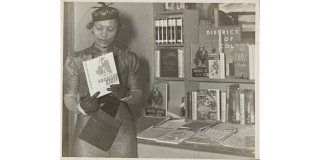
The Zora Neale Hurston collection comprises nine poems and one short story entitled "The Conversion of Man," and correspondence with William Clifford and Lawrence Jordan.
Explore the Zora Neale Hurston collection
Paul Robeson
Paul Robeson (1898–1976) was an actor, singer, and political activist. He was a major figure in the Harlem Renaissance thanks to his performances in plays including Eugene O’Neill’s The Emperor Jones and All God’s Chillun Got Wings. His role in the musical Show Boat, which included his legendary rendition of the song “Ol’ Man River,” became one of the definitive performances in twentieth-century theater, and he played the role of Othello in numerous notable productions. Roles in more than a dozen films and hundreds of musical recordings brought him international acclaim. Meanwhile, his support for the civil rights movement, anti-fascist causes, and communism led to his blacklisting during the McCarthy era. He retired in the early 1960s and lived his last years in Philadelphia.
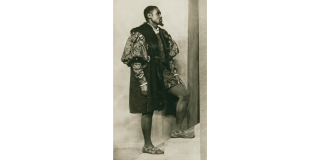
The Paul Robeson collection includes correspondence, texts of speeches, articles, columns, and statements written by Paul Robeson and his wife, Eslanda Goode Robeson, as well as photographs, news clippings, and press releases documenting Robeson's artistic and political activities. The correspondence pertains to Robeson's artistic career, and includes letters written by Eslanda Robeson regarding her husband's difficulties as a result of his association with the Soviet Union. Additional correspondence, reports, news clippings, contracts, and printed matter were generated by Robeson's national tours from 1952 to 1956. Included are materials about the concert and riot which took place in Peekskill, NY, during one of Robeson's performances in 1949; correspondence and legal papers referring to his difficulties in his effort to have his United States passport restored; and letters by William Patterson and W.E.B. Du Bois. Also included are files on various organizations associated with Robeson in the 1950s, including the Council on African Affairs, the National Negro Labor Council, and the World Peace Council.
Explore the Paul Robeson collection
Malcolm X
Malcolm X (1925–1965) was a Muslim minister and human rights activist. Perhaps best known for his time as a spokesperson for the Nation of Islam, he later broke with the NOI and founded the Muslim Mosque, Inc. and the Organization of Afro-American Unity. The Autobiography of Malcolm X chronicled his life, from his childhood in Omaha, Nebraska, to his travels to Mecca just before his assassination in 1965. Eulogized by Ossie Davis as “our shining black prince,” he has since been widely celebrated for his work in pursuit of racial justice.

The Malcolm X collection, which contains papers arranged in 10 series, comprises writings, personal memorabilia, organizational papers and printed matter documenting Malcolm X's activities and opinions as the Nation of Islam's first National Minister, and, following his separation from the organization and his embrace of orthodox Islam in early 1964, as a prominent advocate of human rights and self-determination for African Americans.
Explore the Malcolm X collection
The Malcolm X manuscripts held by the Schomburg Center include a partial manuscript, fragments, and and unpublished chapter of The Autobiography of Malcolm X.
Explore the Malcolm X manuscripts
Discover Black History Month at NYPL
Browse book recommendations, the Schomburg Center’s Black Liberation Reading List, more than 100 free online events, blog posts, research resources, and more as part of the Library’s Black History Month celebrations.

